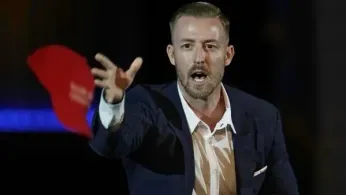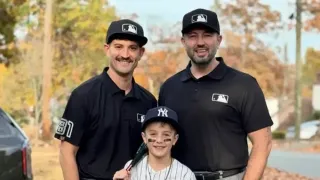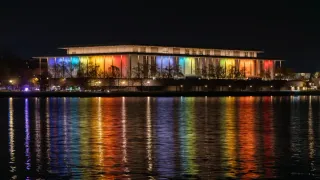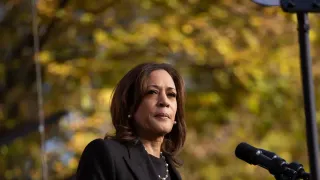
Nov 2
Oklahoma’s Rainbow After the Storm: LGBTQ+ Youth Find Relief as Ryan Walters Exits
READ TIME: 3 MIN.
If you ever doubted the power of politics to shape lives, let Oklahoma’s queer youth set the record straight. For months, young LGBTQ+ Oklahomans weathered a relentless storm under the state’s former schools chief, Ryan Walters—whose tenure was marked by hostility toward queer and transgender students, and a climate so fraught that nearly two-thirds of crisis hotline callers named him as a primary source of distress . But when Walters finally announced his resignation, the change was instant and profound: crisis calls dropped dramatically, with the palpable relief echoing from classrooms to living rooms across Oklahoma .
Between March 2024 and September 2025, the Rainbow Youth Project’s national hotline was inundated by an average of 1,431 monthly calls from LGBTQ+ youth in Oklahoma alone—kids reaching out from bedrooms, dorms, and school bathrooms, desperate for support . In the thirty days following Walters’ exit, that number plummeted to 914—a sharp, hopeful decline signaling that many young people no longer felt the same crushing weight .
The relief wasn’t just statistical. “The relief expressed by callers is palpable, and we are grateful for the positive impact his departure has had on the mental well-being of our community,” said Lance Preston, Executive Director of the Rainbow Youth Project, whose Oklahoma City office now serves more than 500 youth with free mental health counseling, peer support, and a safe place to just be .
For LGBTQ+ Oklahomans, Walters was more than a bureaucratic headache—he became a symbol of institutional rejection. Advocates have confirmed his administration’s policies and rhetoric had “a dramatically negative impact on youth mental health,” with trans students and their allies feeling targeted and unsafe at school . The message was loud and clear: you do not belong.
But queer resilience is legendary. The Rainbow Youth Project and its local allies doubled down, opening new safe spaces, expanding counseling, and advocating for acceptance. The drop in crisis calls isn’t just a statistical win—it’s proof that supportive leadership and visible allyship can transform lives.
With Walters out, the mood among LGBTQ+ youth and advocates is a heady mix of celebration and resolve. Students, teachers, and families report feeling safer and more hopeful about the future. The Rainbow Youth Project continues its outreach, offering drop-in centers and peer support tailored to the needs of queer and trans youth. Nationally, they field over 10,000 calls per month and have provided life-saving care to more than 12,000 young people aged 13–19 in all 50 states .
Still, the fight isn’t over. Advocates urge vigilance, noting that anti-LGBTQ+ rhetoric remains a threat nationwide. But Oklahoma’s story is a reminder: when harmful leadership is ousted, queer communities can—and do—bounce back, stronger and more vibrant than ever.
This moment isn’t just about numbers—it’s about queer joy, resilience, and the power of collective action. In Oklahoma City, youth are gathering, sharing stories, and rediscovering what it means to feel safe in their own skin. The Rainbow Youth Project’s local office has become a hub for empowerment, activism, and celebration—a place where every identity is honored, and every story matters.
For LGBTQ+ readers everywhere, Oklahoma’s transformation is more than state politics—it’s a testament to the enduring strength of our community. When we demand better, push for change, and support each other, even the darkest clouds can part for a little rainbow light.






